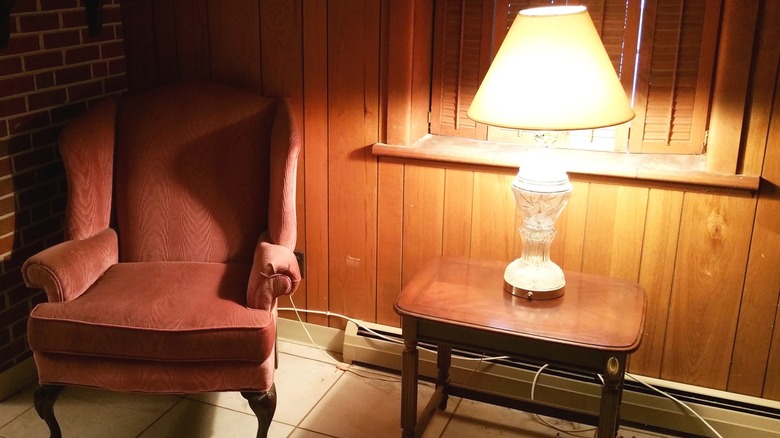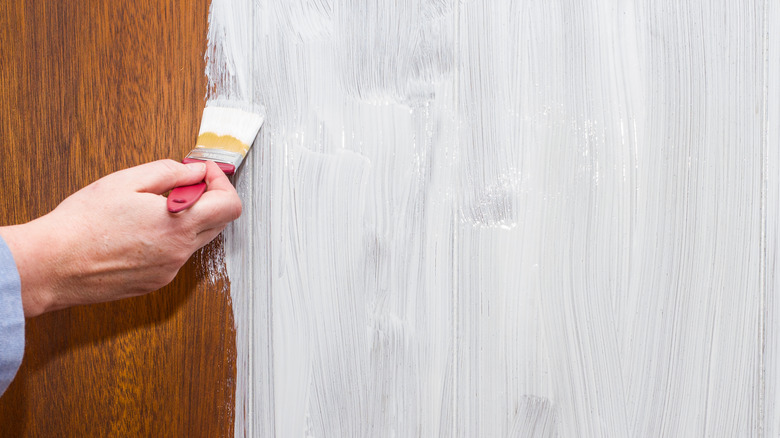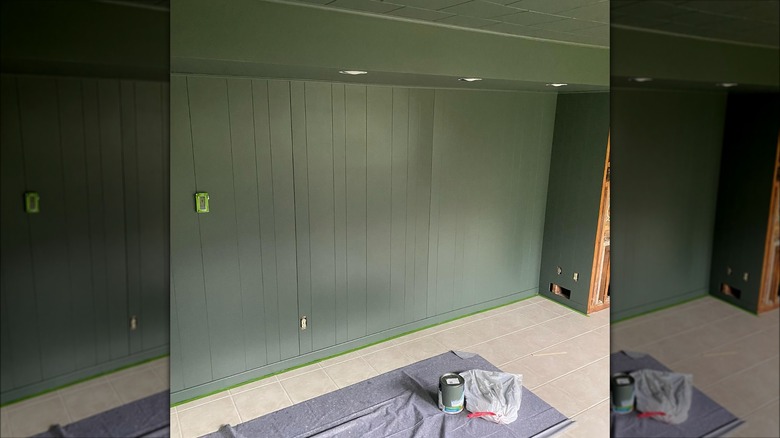Joanna Gaines Shares An Easy Way To Bring Dated Wood Paneling Back To Life
Whether you've recently acquired a new (to you) home or you've been living in an older space for quite some time, it is difficult to find a design feature that feels more automatically dated than wood paneling. While some once-trendy design trends from decades past — like avocado green — have managed to become a source of cool vintage vibes, the dark wood veneer paneling of the '70s will always read more unintentionally outdated than decidedly retro.
Fortunately, all hope is not lost for those who don't have the time or budget for ripping down their home's wood paneling and starting from scratch. Even celebrity renovation pros like Joanna Gaines are opting to give paneling a facelift rather than completely replacing it. Gaines recently performed a small-budget mini-reno that included a living room covered in classic dark wood paneling. "I had less than $5,000 to spend in this space on construction," she shared on the Magnolia blog, "and had to decide between replacing the flooring OR repainting the walls to give this den an updated look." Her solution? Simply find the perfect shade and grab that paint roller.
How to prepare wood paneling for painting
While it's completely safe to use paint to modernize your home's dated wood paneling, it does require some additional preparation in comparison to painting a typical drywall. First, you'll need to thoroughly clean the paneling from top to bottom. Start with a simple wipe-down with a damp washcloth or towel and then repeat the process with the multi-surface cleaner of your choice. Once the paneling has dried completely, it's time to repair any damage.
Wood paneling — especially varieties that feature a thinner veneer — can be prone to accumulating cracks and chips over time. Before painting your paneling, take the time to fill in and smooth over these imperfections using wood putty and a putty knife. If the paneling's wood grain pattern features any particularly deep knots, fill those in with putty as well. Allow the wood putty to harden for about 24 hours or until it feels firm to the touch. Then, it's time to sand and prime.
Use sandpaper to lightly scuff the surface of the paneling (which will help the paint to stick) and smooth out the hardened wood putty. Wipe down the walls to remove any sanding dust, and then prepare to prime. Apply a high-quality, stain-blocking primer using a roller for larger areas and a brush for smaller details like grooves, knots, and edges. Allow the primer to dry for the amount of time stated on the can, and then get ready to paint your paneling.
Painting your wood paneling
As long as your wood paneling has been properly prepared, painting it should be very similar to painting any other type of wall. Once you've selected a high-quality interior latex or oil-based paint, follow the same procedure you did when you applied the primer. First apply the paint to any visible grooves, knots, or edges with a brush. Then, move on to painting larger areas with a roller. Apply at least two coats — allowing for the manufacturer's recommended drying time in between — depending on the color you chose and whether or not the paneling has been fully covered.
If you notice any drips of paint after the final coat has dried, use a soft cloth and some mineral spirits to gently wipe them away. Proceed to painting the trim, if you wish, and then simply stand back and admire the total transformation that is possible for wood paneling using nothing but paint and primer. Thanks, Joanna Gaines!


